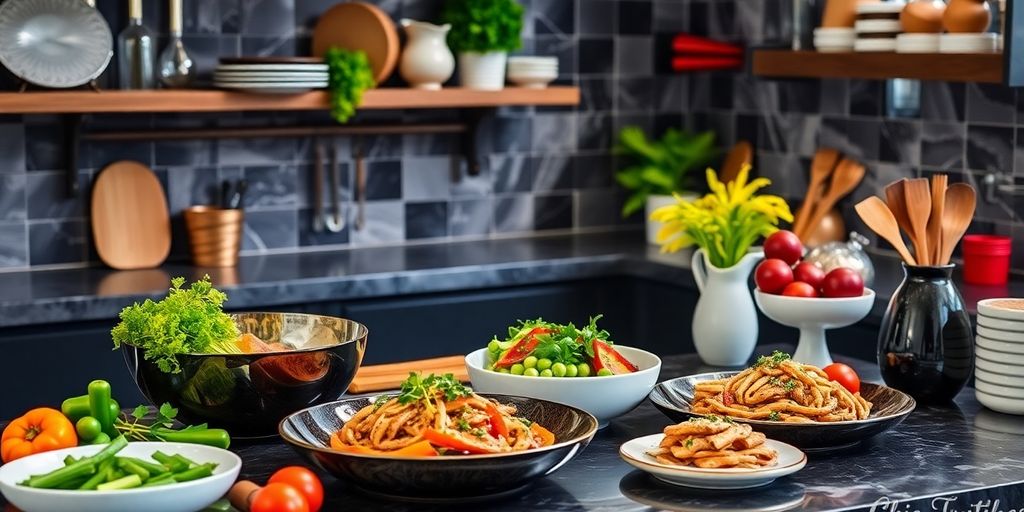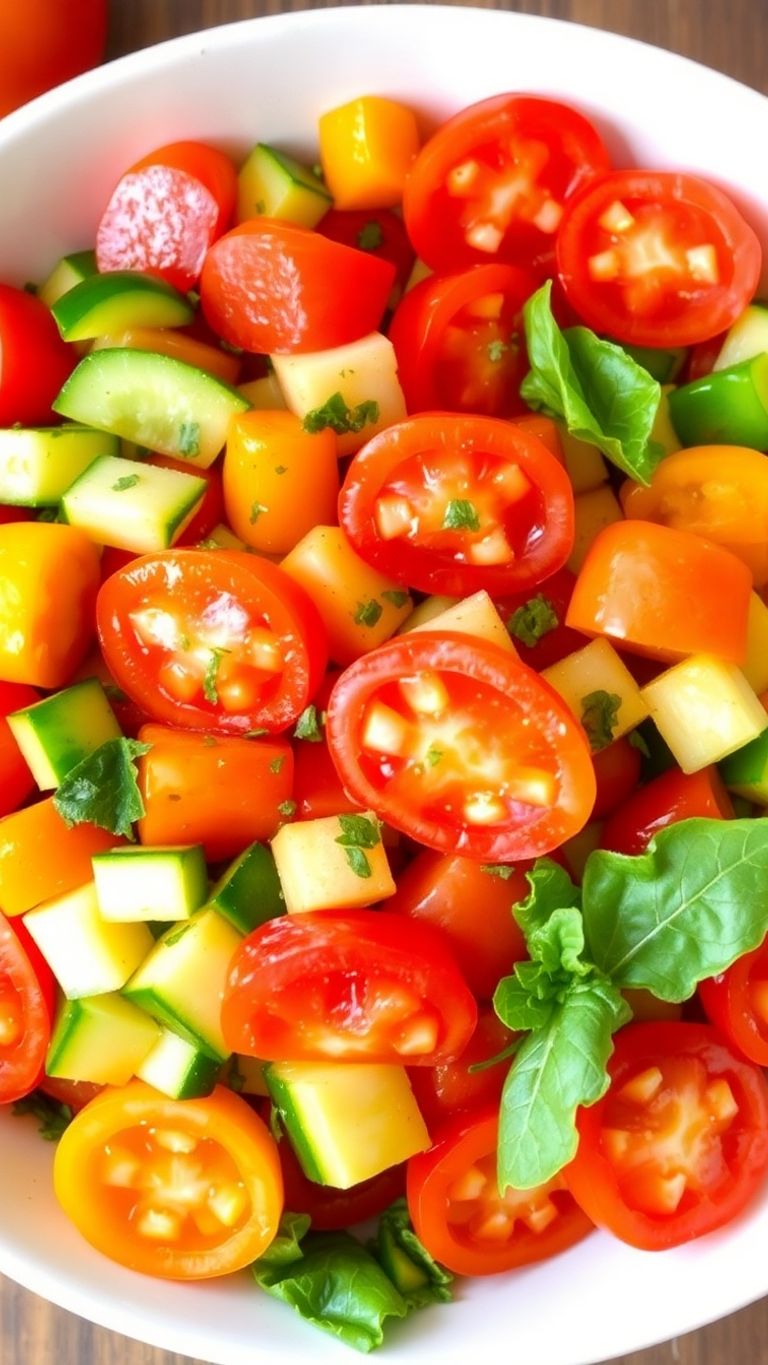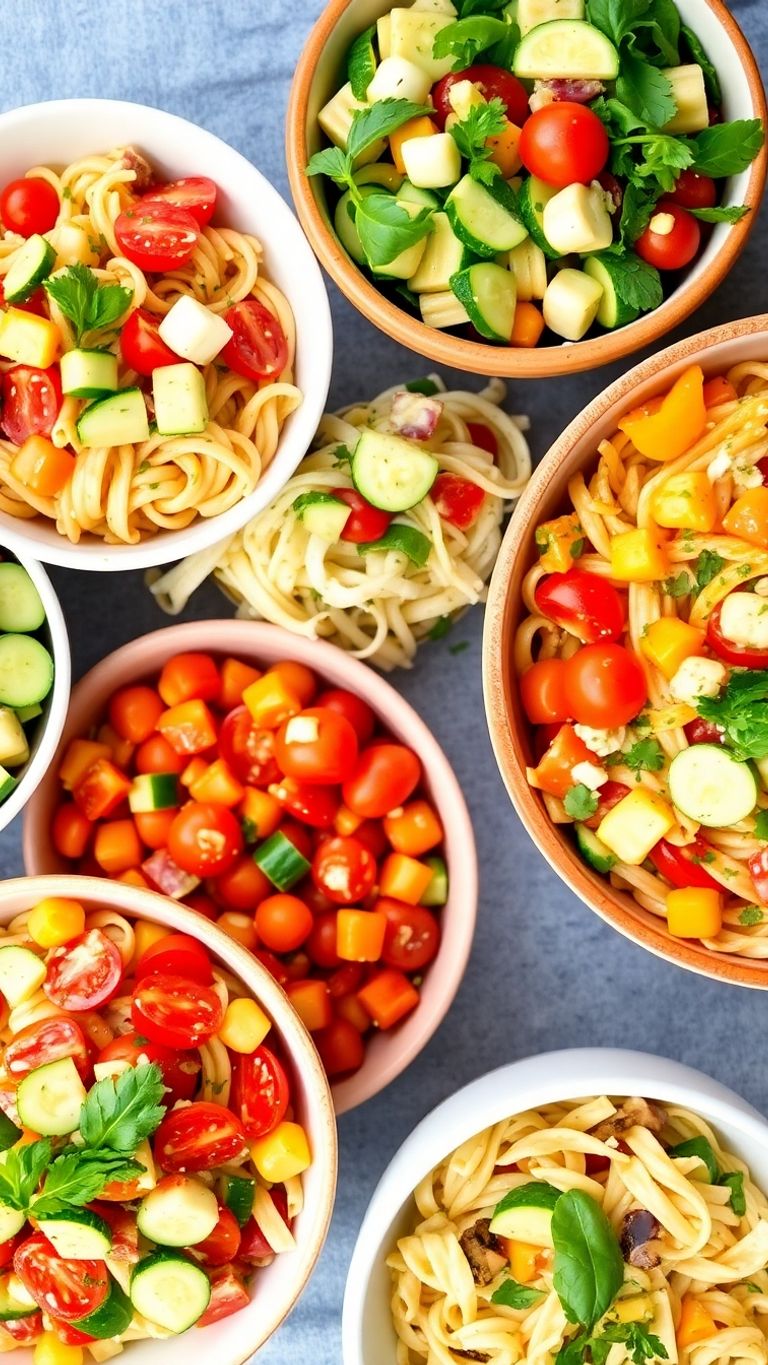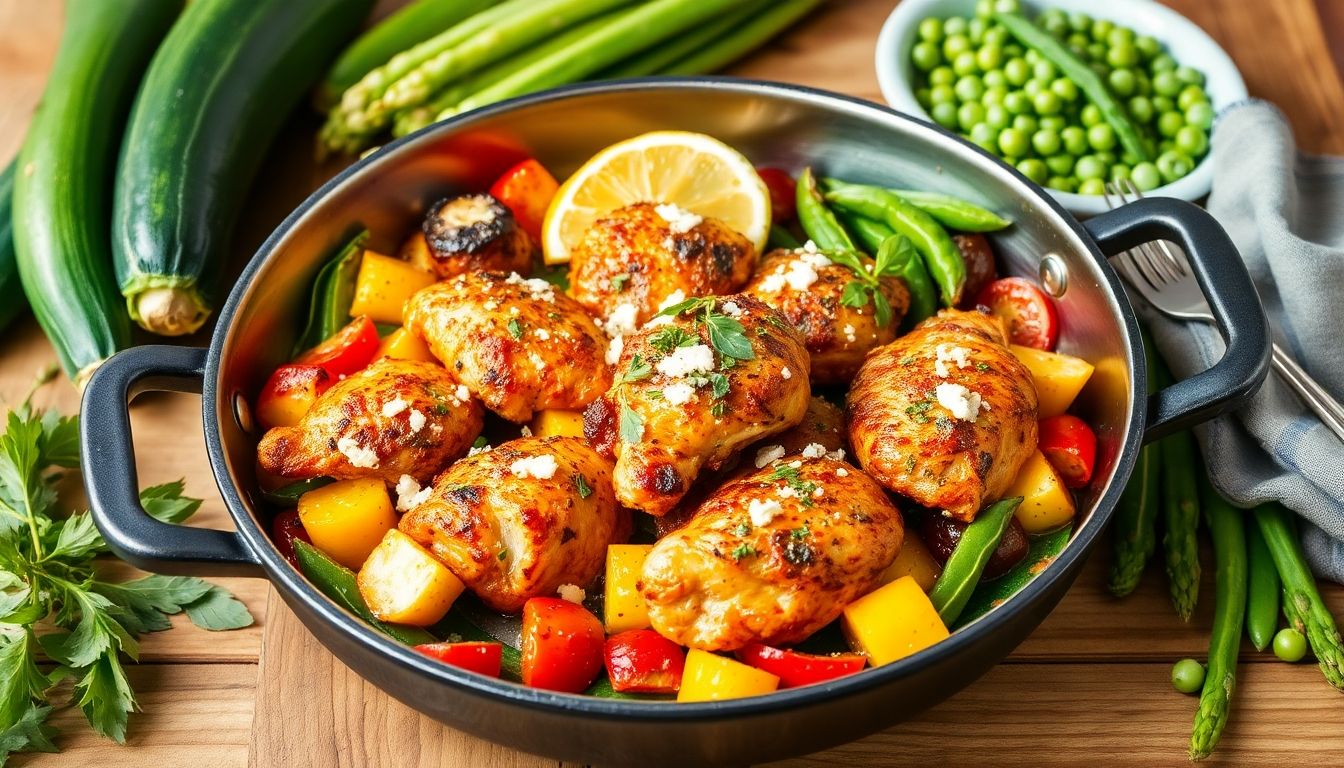Cooking chic food doesn’t have to be complicated. With a few simple tips, you can create stylish meals that impress your guests and satisfy your taste buds. Whether you’re preparing a fancy dinner or just want to elevate your everyday cooking, these eight tips will help you make chic meal prep a breeze. Let’s dive into the world of stylish cooking and discover how to make your dishes look as good as they taste!
Key Takeaways
-
Use fresh ingredients for the best flavor and presentation.
-
Focus on elegant plating to make your meals visually appealing.
-
Experiment with flavor pairing to create unique taste experiences.
-
Master different cooking techniques to enhance your meals.
-
Set a stylish table to complete the chic dining experience.
1. Fresh Ingredients
Okay, so you want to cook chic food? It all starts with what you put into it. Seriously. You can’t make something amazing with subpar stuff. Think of it like this: you wouldn’t build a house with flimsy materials, right? Same goes for cooking.
Using fresh, high-quality ingredients is the foundation of any truly chic dish.
I’m not saying you need to spend a fortune, but be mindful of where your food comes from. Hit up your local farmer’s market. Check out the produce section at a good grocery store. See what’s in season. It makes a difference, trust me.
Fresh ingredients not only taste better, but they also look better. The vibrant colors and textures of fresh produce can elevate your dish from simple to stunning. Plus, you’re supporting local farmers and sustainable practices. It’s a win-win!
Here’s a little breakdown of why fresh ingredients matter:
-
Flavor: Fresh ingredients have a more intense and complex flavor profile.
-
Texture: They offer a better texture, whether it’s the crispness of a fresh vegetable or the tenderness of a cut of meat.
-
Nutritional Value: Fresh ingredients retain more of their vitamins and minerals.
Consider this when you’re planning your next meal. It’s not just about following a recipe; it’s about creating an experience. And that experience starts with the ingredients you choose. For example, when making healthy fiesta chicken bake, using fresh cilantro and lime will make a huge difference. Or, if you’re whipping up a batch of Spruce refillable organic cleaner, the quality of the essential oils will impact the scent and effectiveness.
Here’s a simple table to illustrate the difference:
|
Ingredient |
Fresh |
Non-Fresh |
|---|---|---|
|
Tomatoes |
Bright, juicy, flavorful |
Dull, mushy, bland |
|
Basil |
Aromatic, vibrant green |
Wilted, brown, lacking aroma |
|
Chicken |
Firm, pink, no odor |
Slimy, pale, off odor |
So, next time you’re planning a meal, take a moment to think about your ingredients. Choose wisely, and you’ll be well on your way to cooking chic food that’s both delicious and impressive. And if you’re looking for cleaning products to keep your kitchen spotless after all that cooking, remember that quality matters there too!
2. Elegant Plating

Okay, so you’ve got amazing ingredients and you’ve cooked them perfectly. Now what? Don’t just throw it all on a plate! Think about how it looks. Presentation is key to making your food feel special. It’s like dressing up for a party – it just makes everything feel more elevated.
Think of your plate as a canvas. You’re an artist, and your food is your medium. It’s not just about making it look pretty; it’s about telling a story with your food. It’s about creating an experience that starts before the first bite.
Here are a few things to keep in mind:
-
Color: Use a variety of colors to make your plate visually appealing. Think about how different colors complement each other. A pop of green from fresh herbs can really brighten things up.
-
Texture: Mix it up! Combine smooth purees with crunchy toppings. The contrast will make each bite more interesting.
-
Height: Don’t be afraid to add some height to your plate. Stacking elements can create a more dramatic presentation. Just don’t go overboard – you still want people to be able to eat it easily.
Remember, elegant plating doesn’t have to be complicated. Sometimes, the simplest presentations are the most effective. It’s all about paying attention to detail and taking pride in your work. You can source beautiful produce from local farmers markets to enhance your dishes.
Think about the plate itself. A simple white plate can be a great backdrop for colorful food, but don’t be afraid to experiment with different shapes and sizes. A rectangular plate can be great for showcasing a long piece of fish, while a round plate might be better for a pasta dish. Consider how to beautifully pair flavors in appetizers for an enhanced dining experience.
Ultimately, elegant plating is about showing your guests that you care. It’s about taking the time to create something beautiful and delicious. And that’s what chic food is all about. You can also explore food styling techniques to create visually appealing plates.
Here’s a simple table to illustrate how different plating techniques can affect the perceived value of a dish:
|
Plating Style |
Perceived Value |
Effort Level |
Key Elements |
Example Dish |
|---|---|---|---|---|
|
Simple & Clean |
Moderate |
Low |
White plate, minimal garnish |
Pasta with Tomato Sauce |
|
Rustic & Abundant |
Moderate |
Medium |
Wooden board, generous portions, herbs |
Charcuterie Board |
|
Modern & Minimalist |
High |
High |
Asymmetrical arrangement, edible flowers |
Seared Scallops |
|
Deconstructed |
Very High |
Very High |
Separate components, artistic arrangement |
Lemon Tart (components) |
Don’t be afraid to experiment and find your own style. Have fun with it! You can also enhance your culinary presentations with a colorful palette.
3. Flavor Pairing

Okay, so you want to make food that tastes amazing, right? It’s not just about throwing ingredients together; it’s about understanding how flavors interact. Think of it like a band – each instrument (or ingredient) has its own sound, but together, they create something incredible. Flavor pairing is all about finding those harmonious combinations.
I used to just grab whatever was in the fridge, but then I started paying attention to why certain things taste so good together. It’s like unlocking a secret code to deliciousness. Now, I’m not saying you need to become a food scientist, but a little experimentation can go a long way.
For example, I recently tried pairing dark chocolate with chili flakes. Sounds weird, I know, but the slight heat from the chili really brought out the richness of the chocolate. It was a total game-changer! Don’t be afraid to try unexpected combinations. You might just stumble upon your next favorite dish. You can find inspiration in flavor combinations that are already known to work well.
The key is balance. You don’t want one flavor to overpower the others. It’s about creating a symphony of tastes that complement each other. Think about contrasting textures too – creamy with crunchy, soft with crisp. It all adds to the experience.
Here are a few ideas to get you started:
-
Sweet and Savory: Honey and goat cheese, maple syrup and bacon. The contrast is delightful.
-
Earthy and Bright: Mushrooms and lemon, beets and orange. The brightness cuts through the earthiness.
-
Spicy and Cool: Chili and lime, ginger and mint. The coolness balances the heat.
Don’t be afraid to experiment and trust your taste buds. You can also explore sweet and savory ingredients to enhance the taste of your dishes. Cooking should be fun, so relax and enjoy the process of discovering new flavor combinations. You might even want to check out Chic Finds Hub for more inspiration!
4. Cooking Techniques
Okay, so you’ve got the best ingredients, your plating game is strong, and you’re basically a flavor-pairing genius. Now, let’s talk about actually cooking the food. It’s not just about following a recipe; it’s about understanding why you’re doing what you’re doing. Think of it as leveling up your kitchen skills.
Mastering a few key cooking techniques can transform your dishes from ordinary to extraordinary.
Think about it: perfectly seared scallops, a flawlessly roasted chicken, or vegetables that are actually exciting. These aren’t just happy accidents; they’re the result of knowing your way around the kitchen.
Here are some things to keep in mind:
-
Searing: High heat, right pan, don’t overcrowd. Get that beautiful crust.
-
Braising: Low and slow is the name of the game. Tender, melt-in-your-mouth results.
-
Emulsifying: Oil and water can mix, with a little help. Think vinaigrettes and sauces.
Don’t be afraid to experiment! Cooking should be fun, not a chore. Try new things, mess up, learn from it, and keep going. That’s how you really get better. Plus, you might discover your new favorite dish along the way.
Consider taking a cooking course to really hone your skills. You can also find great tips on food and drink topics online.
5. Seasonal Menus
Okay, let’s talk about seasonal menus. It’s not just about following trends; it’s about embracing what nature gives us at its peak. Think about it: tomatoes in summer bursting with flavor, squash in autumn providing warmth and comfort. Using seasonal ingredients isn’t just chic; it’s also more sustainable and often more affordable. Plus, the flavors are just unbeatable.
Crafting seasonal menus allows you to showcase the freshest, most flavorful ingredients available.
I’m not saying you need to become a farmer, but being aware of what’s in season can really transform your cooking. Check out your local farmer’s market or even the produce section at your grocery store. You’ll be surprised at the variety and inspiration you can find.
Planning your meals around the seasons encourages creativity in the kitchen. It pushes you to explore new recipes and techniques, and it connects you more deeply to the food you’re preparing. It’s a win-win!
Here are a few ideas to get you started:
-
Spring: Asparagus, peas, radishes. Try a spring salad with a light vinaigrette.
-
Summer: Tomatoes, zucchini, corn. Grilled corn salad? Yes, please!
-
Autumn: Squash, apples, Brussels sprouts. Roasted Brussels sprouts with balsamic glaze are always a hit.
-
Winter: Citrus fruits, root vegetables, kale. A hearty kale and sausage soup can warm you right up.
Consider these points when planning your seasonal menus:
-
Availability: What’s actually available in your area? Check local farms and markets.
-
Flavor Profiles: How do different seasonal ingredients complement each other? Experiment with pairings.
-
Presentation: How can you showcase the beauty of seasonal produce on the plate? Think about colors and textures.
Don’t be afraid to experiment and have fun with it. Cooking should be enjoyable, and seasonal menus can add a whole new dimension to your culinary adventures. You can find delicious recipes that are both simple and seasonal. And remember, it’s all about creating a dining experience that’s both elegant and approachable. You can also find some stylish kitchenware to help you prepare your meals.
6. Gourmet Sauces
Let’s talk sauces! They’re not just an afterthought; they’re the secret weapon in your culinary arsenal. A well-crafted sauce can transform a simple dish into something truly extraordinary. Don’t underestimate the power of a good sauce to elevate your cooking game. You can find many chef-approved finishing sauce recipes online.
Think about it: a perfectly seared steak is good, but a perfectly seared steak with a rich, homemade béarnaise? Now we’re talking! Or consider a simple pasta dish elevated to new heights with a vibrant pesto. Sauces are where you can really let your creativity shine and add depth and complexity to your meals.
-
Start with quality ingredients. Just like with everything else, the better the ingredients, the better the sauce.
-
Don’t be afraid to experiment. Try different flavor combinations and techniques to find what you like best.
-
Taste as you go. Adjust seasonings and flavors as needed to create the perfect balance.
Sauces are the unsung heroes of the kitchen. They can add moisture, flavor, and visual appeal to any dish. Mastering the art of sauce-making is a skill that will pay off in countless ways.
Mastering a few key sauces can open up a world of culinary possibilities. You can start with the classics, like a creamy Alfredo or a tangy tomato sauce, and then branch out into more adventurous territory, like a spicy chimichurri or a sweet and savory teriyaki. The possibilities are endless!
Consider these ideas:
-
Classic Tomato Sauce: A versatile base for pasta, pizza, and more. Experiment with different herbs and spices to create your own signature version. You can use this essential sauce for many dishes.
-
Creamy Alfredo: Rich and decadent, perfect for tossing with fettuccine or drizzling over grilled vegetables.
-
Pesto: A vibrant blend of basil, garlic, pine nuts, Parmesan cheese, and olive oil. Use it as a sauce for pasta, a spread for sandwiches, or a topping for grilled meats.
7. Unique Presentation

Okay, so you’ve nailed the flavors, the cooking, and even the plating. But let’s be real, presentation is where you can really make your food unforgettable. It’s about more than just slapping some food on a plate; it’s about creating an experience. Think about how you can use height, color, and texture to make your dishes pop. It’s like giving your food its own runway show.
Don’t be afraid to get creative and think outside the box.
I was at this fancy restaurant last month, and they served a dessert in a hollowed-out book! It was wild. It made me think about how presentation can be a conversation starter, a way to tell a story with your food. You can enhance your festive food presentation by stacking ingredients.
Here are some ideas to get you started:
-
Unexpected Vessels: Think beyond plates. Use things like slate boards, wooden planks, or even edible bowls made from cheese or bread.
-
Garnish Game Strong: Fresh herbs, edible flowers, microgreens – these aren’t just for show. They add flavor and visual appeal. A little goes a long way.
-
Deconstructed Dishes: Instead of plating everything together, separate the elements and let your guests assemble their own dish. It’s interactive and fun.
Presentation isn’t just about making food look pretty; it’s about showing that you care. It’s about putting in that extra effort to make the dining experience special for your guests. It’s about creating memories.
Consider the impact of minimalist dinner plates Japanese minimalist dinner plates to enhance the dining experience. You can also find aesthetic food presentation ideas to elevate your event. Remember, effective food plating enhances the dining experience. Also, remember to emphasize clean lines in food presentation.
8. Stylish Table Settings

Okay, so you’ve nailed the food, the plating is on point, and your guests are ready to be wowed. But wait! Don’t underestimate the power of a truly stylish table setting. It’s the final touch that transforms a meal into an experience. Think of it as the outfit that completes the dish.
First off, let’s talk linens. A crisp, clean tablecloth can instantly elevate the look. Don’t be afraid to play with colors and textures, but always keep it classy. Next up, dinnerware. You don’t need to break the bank, but investing in a set that you love can make a huge difference. And remember, it’s all in the details. Think about adding some elegant round table anti-slip mats to protect your surfaces and add a touch of sophistication.
A well-set table shows your guests that you’ve put thought and care into every aspect of their dining experience. It’s about creating an atmosphere of warmth and welcome.
Now, let’s get into some specifics:
-
Centerpieces: These don’t have to be elaborate floral arrangements. Consider using houseplants or even a collection of candles for a more modern look. Check out some simple centerpiece ideas for inspiration.
-
Place Cards: A handwritten place card adds a personal touch and shows your guests that you’ve thought about where they’ll be sitting. Personalize your table decor to make your guests feel special.
-
Lighting: Soft, warm lighting can create a cozy and inviting atmosphere. Consider using candles or dimming the lights to set the mood.
Ultimately, creating stylish table settings is about expressing your personal style and making your guests feel special. Don’t be afraid to experiment and have fun with it! You can also explore different types of restaurant table settings to get some ideas.
Final Thoughts on Chic Cooking
Cooking chic food isn’t just about fancy ingredients or complicated techniques. It’s about bringing joy and creativity into your kitchen. Remember, every meal is an opportunity to express yourself and share love with those around you. So, don’t stress over perfection; embrace the process and have fun with it. Whether you’re whipping up a quick dinner or planning a lavish feast, let your personality shine through. With these tips, you’re well on your way to creating delicious, stylish meals that will impress and inspire. Happy cooking!
Frequently Asked Questions
What are chic foods?
Chic foods are stylish and elegant dishes that often use fresh, high-quality ingredients to create visually appealing meals.
How can I make my food look fancy?
You can make your food look fancy by using beautiful plating techniques, adding garnishes, and choosing unique serving dishes.
What are some easy flavor pairings?
Some easy flavor pairings include lemon and herbs, garlic and butter, or sweet fruits with savory meats.
What cooking techniques should I learn?
Learning techniques like sautéing, roasting, and grilling can help you create delicious meals.
How do I create a seasonal menu?
To create a seasonal menu, focus on using ingredients that are in season, which will taste better and be fresher.
What are gourmet sauces and how do I make them?
Gourmet sauces are rich and flavorful sauces made from quality ingredients. You can make them by reducing stocks or using fresh herbs and spices.







